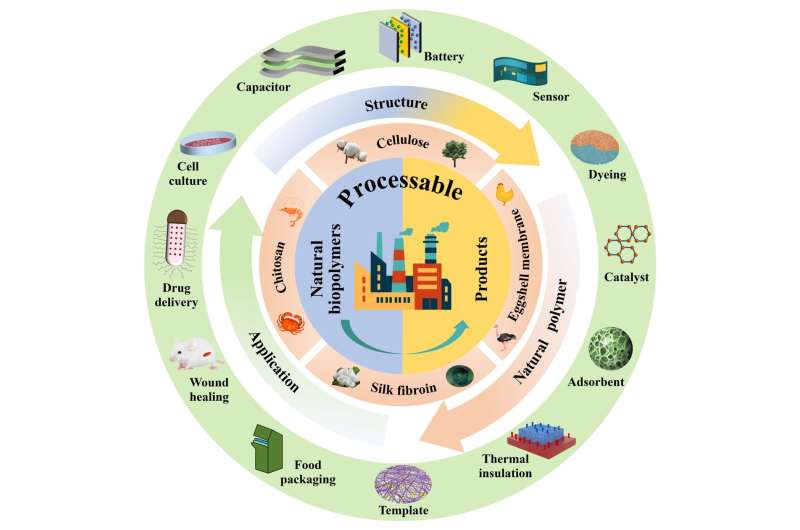In a groundbreaking study published in Science Bulletin, researchers explore the latest advancements in the development of processable natural biopolymers and their remarkable applications. With the alarming rise in global population and economic growth, the demand for materials, chemicals, and energy resources has skyrocketed, leading to an increased reliance on fossil fuels. However, this unsustainable trajectory has prompted a growing interest in exploring eco-friendly alternatives, particularly natural biopolymers derived from renewable sources.

Cellulose, Chitosan and More
This review paper looks at four distinct natural biopolymers with motivations behind their phenomenal properties and applications, specifically cellulose, chitosan, eggshell membrane and silk fibroin.
Cellulose, the most abundant natural polymer in Earth, provides impressive mechanical properties including strength, flexibility and biodegradability. Therefore, researchers are looking for creative ways to treat and utilize cellulose in countless applications, including that of renewable energy storage and biomedicine devices.
Chitosan, a biopolymer extracted from the shells of crustaceans, has been identified as another potent biopolymer with antimicrobial activity rendering it suitable for use in healthcare and food-related sectors. Creating ways to improve chitosan processability is one solution that scientists are exploring in order to realize the full potential of this polysaccharide.
The Potential of Eggshell Membrane and Silk Fibroin
Bio-compatible eggshell membrane (ESM), a by-product from the food industry, has gained considerable interest due to its unique mechanical properties. Now, however, researchers are looking at how to turn this largely ignored material into high-value products, including wound dressings and tissue engineering scaffolds.
Derived from silkworm cocoons, silk fibroin (fibrous protein), an incredible alternative biopolymer due to its outstanding optimal mechanical resistance, plasticity, and biological compatibility. Their findings point towards the necessary relation of this work for using silk fibroin more efficiently in applications including textiles, cosmetics and biomedicine as it aims to open up doors for new types of processing ways.
A Greener Future with Sustainable Solutions
Researchers highlight the urgent need for solutions to environmental, economic challenges presented by fossil fuel based polymers. The research highlights the increased recognition of a need for sustainable alternatives including natural biopolymers to satisfy the increasing demand worldwide for materials and chemicals.
In developing the materials, and a range of other strands of research, Dr Restrepo-Schild said: “Now we have promising smart materials to construct organs capable of producing solar energy and i think we are about five years away from realising our first practical experiments. The trend described above suggests a move towards environmentally sustainable and cost-effective functional materials from renewable sources, offering the possibility of a more “green” future in harmony with emerging societal needs and environmental issues alike.
